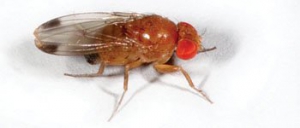A species of yeast that University of California scientists have found in cherries and raspberries infested by the spotted wing drosophila could play a role in developing better lures to detect the pest.
The spotted wing drosophila, a pest that originated in Asia, first invaded California in 2008. If uncontrolled, it has the potential to cause $860 million in crop losses for cherry and caneberry growers in California, Oregon, and Washington, according to a press release from the university.
UC-Davis scientists, working with a visiting professor from Spain, found the yeast Hanseniaspora uvarum in almost every cherry, raspberry, and spotted wing drosophila larva that they collected in Davis, Winters, and Watsonville.
Dr. Kyria Boundy-Mills, curator of the Phaff Yeast Culture Collection, who is working on the project, said they are conducting tests to see if the yeast would be a good lure to detect the fly in the field. In commercial orchards, the spotted wing drosophila is typically being trapped with lures of apple cider vinegar or baker’s yeast and sugar water, but those lures also attract other fruit flies and nontarget insects.
Also working on the project are Dr. Frank Zalom, entomologist and IPM specialist at UC Davis, graduate student Kelly Hamby, and Professor Alejandro Hernandez of the University of Extramadura, Spain.


Leave A Comment